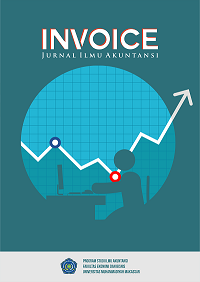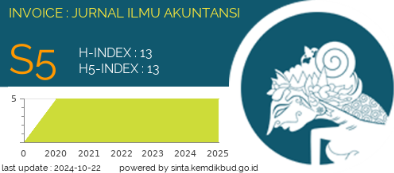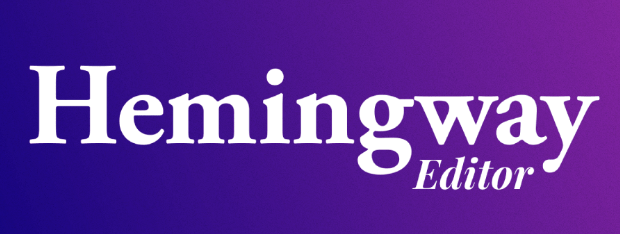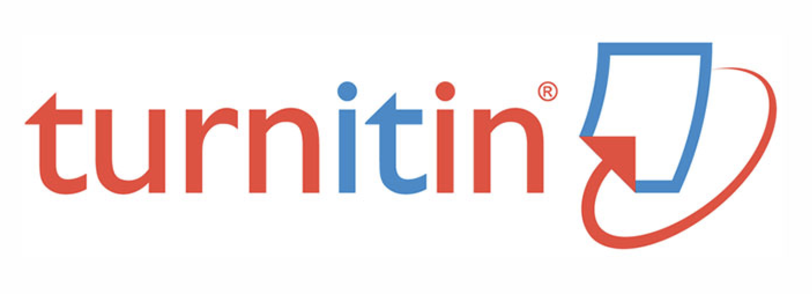The Effect Leverage, Operating Capacity, and Sales Growth On Financial Distress with Corporate Governance as Moderating Variable
DOI: https://doi.org/10.26618/inv.v5i2.12303
Abstract
This study focuses on examining the interplay of Corporate Governance in the context of financial ratios, including Leverage, Operating Capacity, and Sales Growth, concerning Financial Distress. The theoretical frameworks guiding this research are the pecking order theory and agency theory. To gather data, the study employs a secondary data collection method through documentary analysis. The primary data source consists of the annual reports of manufacturing companies listed on the Indonesia Stock Exchange (IDX) from 2018 to 2020. The sample selection process adopts the purposive sampling method, resulting in a dataset comprising 194 data points. The findings of this research reveal that Leverage exerts a significant and positive influence on Financial Distress. Conversely, Operating Capacity and Sales Growth do not exhibit any significant effects on Financial Distress. Furthermore, the Moderating Regression Analysis (MRA) conducted indicates that Corporate Governance can moderate the relationship between Leverage and Operating Capacity concerning Financial Distress. However, Corporate Governance does not have a moderating effect on the relationship between Sales Growth and Financial Distress. These results shed light on the intricate dynamics between financial ratios, Corporate Governance, and Financial Distress, offering valuable insights for practitioners and policymakers in managing and assessing the financial health of manufacturing companies in the stock exchange.References
Amanda, Y., & Tasman, A. (2019). Pengaruh Likuiditas, Leverage, Sales growth dan Ukuran Perusahaan Terhadap Financial distress Pada Perusahaan Manufaktur yang Terdaftar di Bursa Efek Indonesia (BEI) Periode 2015-2017. Jurnal Ecogen, 2(3), 453-462.
Ariesta, D. R., & Chariri, A. (2013). Struktur Kepemilikan Saham dan Komite Audit Terhadap Financial distress. Jurnal Akuntansi Dan Ekonomika Dan Bisnis Universitas Diponegoro, 1, 1–9.
Asfali, I. (2019). Pengaruh Profitabilitas, Likuiditas, Leverage, Aktivitas, Pertumbuhann Penjualan Terhadap Financial distress Perusahaan Kimia. Jurnal Ekonomi Dan Manajemen, 20(2), 56-66.
Asia Development Bank. (2016). ASEAN Corporate governance Scorecard Country Report and Assessments 2014. Philippines.
Candradewi, M. R., & Rahyuda, H. (2021). The Influence of Financial Indicators, Corporate governance and Macroeconomic Variables on Financial distress. Jurnal Ekonomi Kuantitatif Terapan Vol. 14 No. 1.
Chrissentia, T., & Syarief, J. (2018). Analisis pengaruh rasio profitabilitas, leverage, likuiditas, firm age, dan kepemilikan institusional terhadap financial distress. SiMak, 16(01), 45-62.
Cinantya, I. G. A. A. P., & Merkusiwati, N. K. L. A. (2015). Pengaruh Corporate governance, Financial Indicators, dan Ukuran Perusahaan pada Financial distress. E- Jurnal Akuntansi Universitas Udayana, 10(3), 897-915.
Cotei, C., Farhat, J., & Abugri, B. A. (2011). Testing trade‐off and pecking order models of capital structure: does legal system matter?. Managerial Finance.
Curry, K., & Banjarnahor, E. (2018). Financial distress Pada Perusahaan Sektor Properti Go Public di Indonesia. In Prosiding Seminar Nasional Pakar (pp. 207-221).
Dianova, A., & Nahumury, J. (2019). Investigating the Effect of Liquidity, Leverage, Sales growth and Good Corporate governance on Financial distress. Journal of Accounting and strategic Finance, 2(2), 143-156.
Ditasari, R. A., Triyono, D., & Sasongko, D. N. (2019). Comparison of Altman, Springate, Zmijewski and Grover Models in Predicting Financial distress on Companies of Jakarta Islamic Index (JII) on 2013-2017. International Summit on Science Technology and Humanity (ISETH2019).
Fadilla, F., & Dillak, V. J. (2019). Pengaruh Struktur Modal, Pertumbuhan Perusahaan, Dan Profitabilitas Terhadap Financial distress. eProceedings of Management, 6(2).
Fahmi, I. (2014). Analisis Laporan Keuangan. Bandung: Alfabeta.
Fatmawati, A., & Wahidahwati, W. (2017). Faktor-Faktor yang Memengaruhi Financial distress (Studi Pada Perusahaan Manufaktur di BEI). Jurnal Ilmu dan Riset Akuntansi (JIRA), 6(10).
Fitri, M. A., & Dillak, V. J. (2020). ARUS KAS OPERASI, LEVERAGE, SALES GROWTH TERHADAP FINANCIAL DISTRESS. Jurnal Riset Akuntansi Kontemporer, 12(2), 60-64.
Forum for Corporate governance in Indonesia. (2001). Corporate governance: Tata Kelola Perusahaan (Edisi Ketiga.). Jakarta: Prentice Hall.
Gamayuni, R. R. (2011). Analisis Ketepatan Model Altman sebagai Alat untuk Memprediksi Kebangkrutan (Studi Empiris pada Perusahaan Manufaktur di BEI). Jurnal Akuntansi dan Keuangan, 16(2), 158-176.
Ghozali, I. (2016). Aplikasi Analisis Multivariate dengan Program IBM SPSS 23 (Edisi 8.). Cetakan ke VIII. Semarang: Badan Penerbit Universitas Diponegoro.
Ghozali, I. (2018). Aplikasi Analisis Multivariate dengan Program IBM SPSS. Semarang: Badan Penerbit Universitas Diponegoro.
Giarto, R. V. D., & Fachrurrozie, F. (2020). The Effect of Leverage, Sales growth, Cash Flow on Financial distress with Corporate governance as a Moderating Variable. Accounting Analysis Journal, 9(1), 15-21.
Hadi, S. A. F., & Andayani. (2014). Mekanisme Corporate governance dan Kinerja Keuangan pada Perusahaan yang Mengalami Financial distress. Jurnal Ilmu & Riset Akuntansi, 3(5), 1-17.
Handayani, R. D., Widiasmara, A., & Amah, N. (2019). Pengaruh operating capacity dan sales growth terhadap financial distress dengan profitabilitas sebagai variabel moderating. In SIMBA: Seminar Inovasi Manajemen, Bisnis, dan Akuntansi (Vol. 1).
Handriani, E., Ghozali, I., & Hersugodo, H. (2021). Corporate governance on financial distress: Evidence from Indonesia. Management Science Letters, 11(6), 1833-1844.
Idawati, W. (2020). Analisis Financial distress: Operating capacity, Leverage, Dan Profitabilitas. Jurnal Akuntansi Bisnis, 13(1).
International Finance Corporation (IFC) (2014). The Indonesia Corporate governance Manual - First Edition. The Indonesia Corporate governance Manual.
Jensen, M. C., & Meckling, W. H. (1976). Theory of the firm: Managerial behaviour, agency costs and ownership structure. Journal of financial economics, 3(4), 305-360.
Juhaeriah, J., Abbas, D. S., & Hakim, M. Z. (2021). Pengaruh Sales growth, Arus Kas, Ukuran Perusahaan, Kepemilikan Manajerial, Kepemilikan Institusional Terhadap Financial distress. Prosiding Seminar Nasional Ekonomi Dan Bisnis (pp. 359-369).
Kasmir. (2012). Analisis Laporan Keuangan (Edisi Revisi.). Jakarta: PT Rajagrafindo Persada.
Kasmir. (2019). Analisis Laporan Keuangan. Jakarta: PT Rajagrafindo Persada.
Komala, F., & Triyani, Y. (2019). Analisis Rasio Keuangan Terhadap Financial distress Dengan Struktur Kepemilikan Sebagai Variabel Moderasi. Jurnal Akuntansi, 8(2).
Komite Nasional Kebijakan Governance (KNKG). (2006). Pedoman Umum Good Corporate governance Indonesia. Jakarta: KNKG.
Larasati, H., & Wahyudin, A. (2019). The Effect of Liquidity, Leverage, and Operating capacity on Financial distress with Managerial Ownership as a Moderating Variable. Accounting Analysis Journal, 8(3), 214-220.
Lesmana, N., & Damayanti, C. R. (2021). How Corporate governance protects Indonesian Companies From Financial distress. Jurnal Administrasi Bisnis, 10(1), 13-22.
Liana, D., Sutrisno, (2014). Analisis rasio keuangan untuk memprediksi kondisi financial distress perusahaan manufaktur. Jurnal Studi Manajemen dan Bisnis, 1(2), 52-62.
Mafiroh, A., & Triyono, T. (2018). Pengaruh Kinerja Keuangan dan Mekanisme Corporate governance Terhadap Financial distress (Studi Empiris pada Perusahaan Manufaktur yang Terdaftar di Bursa Efek Indonesia Periode 2011-2014). Riset Akuntansi dan Keuangan Indonesia, 1(1), 46-53.
Mayangsari, L. P., & Andayani. (2015). Pengaruh Good Corporate governance dan Kinerja Keuangan terhadap Financial distress. Jurnal Ilmu & Riset Akuntansi, Vol. 4 No. 4.
Mulyati, S., & Ilyasa, S. (2020). The Comparative Analysis of Altman Z-Score, Springate, Zmijewski, And Internal Growth Rate Model in Predicting the Financial distress (Empirical Study on Mining Companies Listed on Indonesia Stock Exchange 2014-2017). KINERJA, 24(1), 82-95.
Novyarni, N., & Dewi, M. (2020). Pengaruh Sales growth, Leverage, Operating capacity Dan Ukuran Perusahaan Terhadap Prediksi Kesulitan Keuangan. Prosiding Konferensi Nasional Ekonomi Manajemen dan Akuntansi (KNEMA), 1(1).
Nurhaliza, S. (2021, September 21). Keuangan Menurun dan Utang Menumpuk, Puluhan Perusahaan Raksasa Ikut Terdampak Pandemi. IDXChannel.com.
OECD. (n.d.). Corporate governance and financial crisis. Diterima dari http://www.oecd.org.
OYEDEKO, Y. O., & ZUBAIRU, M. (2019). Empirical Test of Trade Off Theory and Pecking Order Theory as Determinants of Corporate Leverage: Evidence from A Panel Data Analysis Upon Nigerian SMEs. Fountain University Osogbo Journal Of Management, 4(2).
Pawitri, A. I., & Alteza, M. (2020). Analisis Pengaruh Likuiditas, Profitabilitas, Leverage, Operating capacity, dan Biaya Agensi Manajerial terhadap Financial distress. Jurnal Fokus Manajemen Bisnis, 10(2), 149-168.
Platt, H. D., & Platt, M. B. (2002). Predicting corporate financial distress: reflections on choice-based sample bias. Journal of economics and finance, 26(2), 184-199.
Prasetya, E. R., & Oktavianna, R. (2021). Financial distress Dipengaruhi oleh Sales growth dan Intellectual Capital. JABI (Jurnal Akuntansi Berkelanjutan Indonesia), 4(2), 170-182.
Prihanto, H. (2018). Etika Bisnis & Profesi: Sebuah Pencarian. Jakarta: PT Rajagrafindo Persada.
Purba, S. I. M. (2018). Pengaruh Kepemilikan Institusional, Intellectual Capital, Dan Leverage Terhadap Financial distress. JAF (Journal of Accounting and Finance), 2(2), 27-40.
Putri, A. K., & Kristanti, F. T. (2020). Faktor-faktor yang Memengaruhi Financial distress Menggunakan Survival Analysis. JIMFE (Jurnal Ilmiah Manajemen Fakultas Ekonomi), 6(1), 31-42.
PUTRI, D. R. (2016). Pengaruh Sales growth, Ukuran Perusahaan dan Kebijakan Dividen terhadap Kebijakan Hutang (Studi Pada Perusahaan Manufaktur Di Bursa Efek Indonesia). Doctoral dissertation, Stie Perbanas Surabaya.
Putri, N. W. K. A. & Merkusiwati, N. K. L. A. (2014). Pengaruh Mekanisme Corporate governance, Likuiditas, Leverage, dan Ukuran Perusahaan Pada Financial distress. E-Jurnal Akuntansi Universitas Udayana. Vol 7. No 1, 93-106.
Putri, P. A. D. W. (2021). The Effect of Operating Cash Flows, Sales growth, and Operating capacity in Predicting Financial distress. International Journal of Innovative Science and Research Technology, Vol. 6.
Rahmawati, T., & Handriyana, Y. (2018). Corporate governance to Prevent Financial distress Evidence from Corporate governance Perceptions Index of Indonesian Companies. Indonesian Journal Of Business And Economics, 1(1).
Rahmy, R. (2015). Pengaruh Profitabilitas, Financial Leverage, Sales growth Dan Aktivitas Terhadap Financial distress (Studi Empiris pada Perusahaan Manufaktur yang Terdaftar di BEI Tahun 2009-2012). Jurnal Akuntansi, 3(1).
Ramli, R., & Setiany, S. (2021). Comparative analysis of good corporate governance implementation based on ASEAN corporate governance scorecard from the indonesian banking industry. Jurnal Keuangan dan Perbankan, 25(1), 117-131.
Riswan, R., & Sari, N. P. (2015). Factors Affecting Capital Structure in Manufacturing Companies Go-Public in Indonesia Stock Exchange in The Year 2011-2013. Jurnal Akuntansi dan Keuangan, 6(2).
Rudianto. (2013). Akuntansi Manajemen: Informasi untuk Pengambilan Keputusan Strategis. Jakarta: Erlangga.
Saputra, A. J., & Salim, S. (2020). Pengaruh Profitabilitas, Leverage, Firm Size, Dan Sales growth Terhadap Financial distress. Jurnal Paradigma Akuntansi, 2(1), 262-269.
Setyowati, W. & Sari, N. R. N. (2019). Pengaruh Likuiditas, Operating capacity, Ukuran Perusahaan dan Pertumbuhan Penjualan terhadap Financial distress (Studi Pada Perusahaan Manufaktur Yang Terdaftar Di BEI Tahun 2016-2017). Magisma: Jurnal Ilmiah Ekonomi dan Bisnis, 7(2), 135-146.
Simanjuntak, C. E. B., Krist, F. T., & Aminah, W. (2017). Pengaruh Rasio Keuangan Terhadap Financial distress. eProceedings of Management, 4(2).
Sopian, D., & Rahayu, W. P. (2017). Pengaruh Rasio Keuangan dan Ukuran Perusahaan terhadap Financial distress (Studi Empiris pada Perusahaan Food and Beverage di Bursa Efek Indonesia). Competitive Jurnal Akuntansi dan Keuangan, 1(2).
Sugiyanto, S., & Candra, A. (2020). Moderating Good Corporate governance Effect Sales growth, Conservatisme Accounting And Liquidity Risk Terhadap Agresivitas Pajak (Studi Pada Perusahaan Manufaktur Dan Jasa Keuangan Terdaftar Bei). Proseding Seminar Nasional Akuntansi (Vol. 2, No. 1).
Sugiyono. (2012). Memahami Penelitian Kuantitatif. Bandung: Alfabeta.
Sugiyono. (2017). Metode Penelitian Kuantitatif, Kualitatif, dan R&D. Bandung : Alfabeta.
Sugiyono. (2018). Metode Penelitian Kuantitatif. Bandung: Alfabeta.
Sulastri, A., Mulyati, S., & Icih, I. (2018). Analisis Pengaruh ASEAN Corporate governance Scorecard, Leverage, Size, Growth Opportunities, dan Earnings Pressure terhadap Konservatisme Akuntansi (Studi Kasus pada Perusahaan Top Rank 50 ASEAN Corporate governance Scorecard di Indonesia yang Terdaftar. ACCRUALS (Accounting Research Journal of Sutaatmadja), 2(1), 41-67.
Suprayogo, S., & Hasymi, M. (2018). Pengaruh Penerapan Sistem E-Filing Terhadap Kepatuhan Wajib Pajak Orang Pribadi Dengan Pemahaman Internet Sebagai Variabel Moderasi Pada Kantor Pelayanan Pajak Pratama Jakarta Jatinegara. Profita, 11(2), 151-164.
Suryani, S. (2020). Pengaruh Profitabilitas, Leverage, Sales growth dan Ukuran Perusahaan terhadap Financial distress. Jurnal Online Insan Akuntan, 5(2), 229-244.
Susanti, N., Latifa, I., & Sunarsi, D. (2020). The Effects of Profitability, Leverage, and Liquidity on Financial distress on Retail Companies Listed on Indonesian Stock Exchange. Jurnal Ilmiah Ilmu Administrasi Publik, 10(1), 45-52.
Susilowati, P. I. M., & Fadlillah, M. R. (2019). Faktor-Faktor Yang Memengaruhi Financial distress Pada Perusahaan Manufaktur Di Indonesia. Jurnal Akuntansi dan Sistem Informasi. Banjarmasin. Universitas Lambung Mangkurat.
Tanjung, P. R. S. (2020). Comparative Analysis of Altman Z-score, Springate, Zmijewski and Ohlson Models in Predicting Financial distress. EPRA International Journal of Multidiscriplinary Research (IJMR), 6(3), 126-137.
Udin, S., Khan, M. A., & Javid, A. Y. (2017). The effects of ownership structure on likelihood of financial distress: an empirical evidence. Corporate governance: The international journal of business in society.
Ulinnuha, H. H., Mawardi, M. C., & Mahsuni, A. W. (2020). Pengaruh Rasio Aktivitas, Rasio Leverage, Dan Rasio Pertumbuhan Perusahaan Dalam Memprediksi Financial distress (Studi pada Perusahaan Manufaktur yang Terdaftar di Bursa Efek Indonesia Periode 2016–2018). Jurnal Ilmiah Riset Akuntansi, 9(03).
Wahidmurni. (2017). Pemaparan Metode Penelitian Kuantitatif.
Widarjo, W., Sudaryono, E. A., Sutopo, B., Syafiqurrahman, M., & Juliati, J. (2021). The Moderating Role of Corporate governance on the Relationship between Political Connections and Tax Avoidance. Jurnal Dinamika Akuntansi, 13(1), 62-71.
Widhiari, N. L. M. A., & Merkusiwati, N. K. L. A. (2015). Pengaruh rasio likuiditas, leverage, operating capacity, dan sales growth terhadap financial distress. E-Jurnal Akuntansi Universitas Udayana, 11(2), 456-469.
Wikartika, I., & Fitriyah, Z. (2018). Pengujian Trade Off Theory dan Pecking Order Theory di Jakarta Islamic Index. BISMA (Bisnis Dan Manajemen), 10(2), 90.
Younas, N., Udin, S., Awan, T., & Khan, M. Y. (2021). Corporate governance and financial distress: Asian emerging market perspective. Corporate governance: The International Journal of Business in Society.
Yusra, I., & Bahtera, N. T. (2021). Prediction modelling the financial distress using corporate governance indicators in Indonesia. Jurnal Kajian Manajemen Bisnis, 10(1), 18-32.
Downloads
Published
Issue
Section
License
Authors who publish with Invoice: Jurnal Ilmu Akuntansi agree to the following terms:
-
Copyright Ownership
The copyright of all articles published in this journal remains with the author(s). However, the authors grant Invoice: Jurnal Ilmu Akuntansi the right of first publication with the work simultaneously licensed under a Creative Commons Attribution 4.0 International License (CC BY 4.0). This license allows others to share, copy, redistribute, adapt, and build upon the work for any purpose, even commercially, as long as proper credit is given to the original author(s) and the source. -
Licensing and Access
Invoice: Jurnal Ilmu Akuntansi provides immediate open access to its content on the principle that making research freely available to the public supports a greater global exchange of knowledge. All published materials are available freely without subscription or payment and can be accessed, downloaded, and reused by any user provided that appropriate attribution is given. -
Permission for Reuse
For uses not covered by the CC BY 4.0 license, such as commercial reprints, translations, or any form of adaptation without clear attribution, users must obtain written permission from the editorial team. Requests for such permissions can be directed to the editorial office at: [invoice@unismuh.ac.id]. -
Plagiarism and Originality
Authors are responsible for the originality of their submissions. All articles are screened for plagiarism using appropriate tools before acceptance. Manuscripts found to contain unoriginal content or infringing materials will be rejected or retracted as per journal policy.














